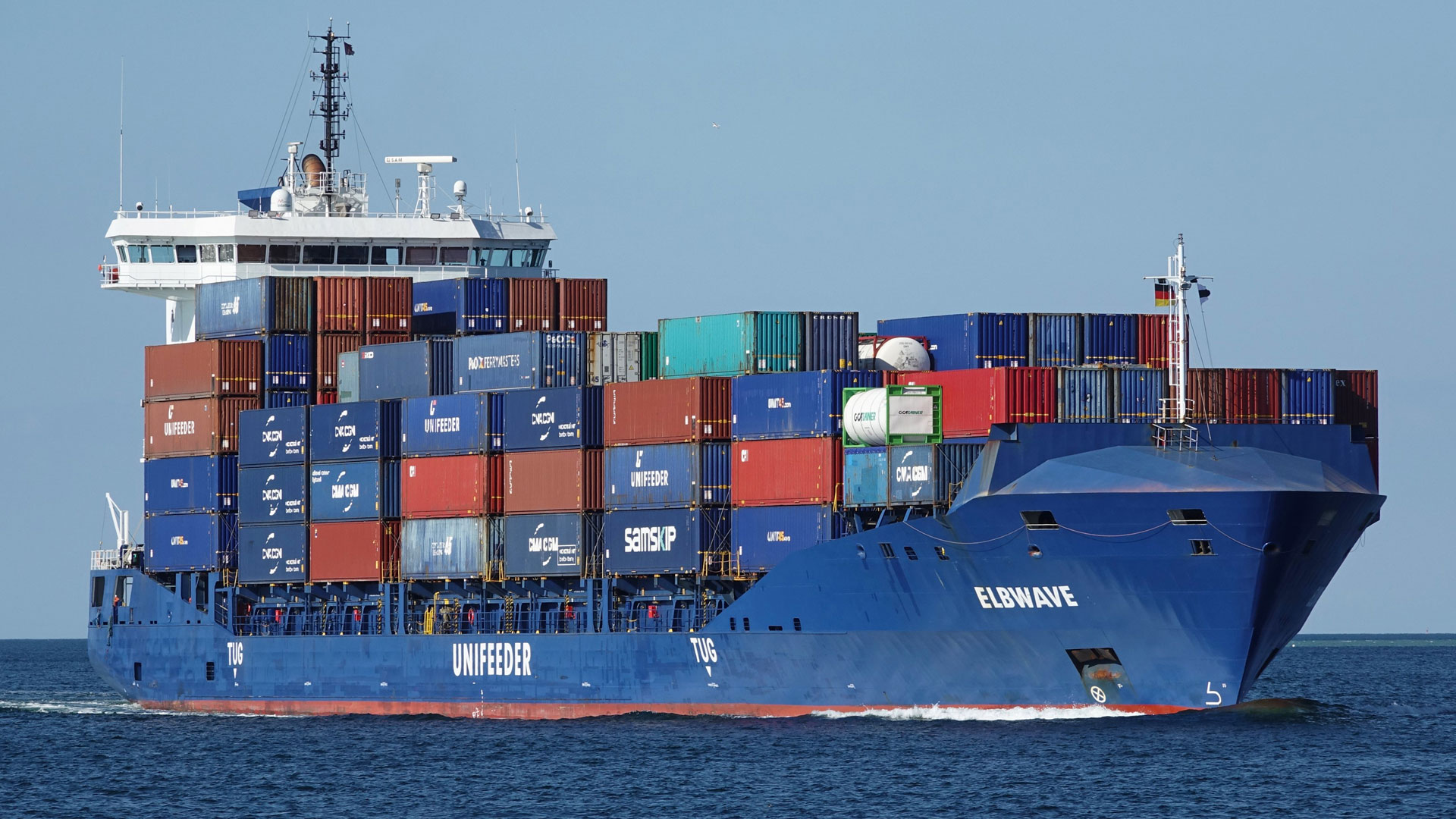Schiffsbezogene Hafenumfuhren sind der richtige Weg
With a new service for shipboard transhipment in port, available freight capacity on feeder vessels is being cleverly exploited to both relieve Hamburg’s ...

This joint project triggered by the Danish shipping company Unifeeder with the Hamburg software house DAKOSY and DIHLA DAKOSY – DIHLA being the Hamburg Liner Agents’ joint interest group, shows what can be achieved through practical cooperation in the Port of Hamburg. The newly created digital application can be used by all feeder carriers that want to use their spare slot capacity for port tours.
Since 1 N ovember 2 022, c ontainers t hat would normally be transported daily by truck between the Hamburg terminals can be transferred by feederships within the port. “Every day we call at all of the usual Hamburg container terminals and we always have sufficient spare capacity to carry additional containers within the port,” underlines Florian Pein, Unifeeder’s Area Director West and Central Europe. With up to 85 terminal calls per week in Hamburg, the biggest feeder carrier in Northern Europe has a considerable quantity of free slots available.
These should be specifically used for transhipment tours, i.e. transhipping containers between ocean-going vessels and feederships that will not be reloaded at the same terminal. Currently, the containers in question are moved by truck around the port. The environment- friendly alternative is of special significance for Pein because of the sheer lack of qualified/ experienced truck drivers. “We are suffering from the effects of a long-term downturn in the number of newcomers to truck driving. This has led to a considerable lack of transhipment capacity and long waiting times in the Port of Hamburg,” stresses Pein.
The newly inaugurated service comprises container transhipment by feedership between HHLA’s Terminals: CTA, CTT and CTB, as well as Eurogate and shortly Süd- West Terminal, too. With this approach, in the medium- term, Unifeeder is striving to switch 50% of its transhipment tours from truck to feedership. DIHLA managing director Alexander Geisler is delighted: “By exploiting shipboard transhipment tours, every year thousands of containers can be taken off the road system. Every container that we move shipboard means cutting down on C02.”
„We offer intra-port
transhipments on
feeder vessels“
„Ensure transhipment tours
conform
to Customs regulations.”
To get the new service off the ground, firstly it was essential to create a digital Customs handling procedure. The necessary pre-financing was provided by DIHLA. Geisler explains their motivation: “Using the digital infrastructure, the way is clear to relieve the road infrastructure in the port and, taking available ship capacity into account, to be environment-friendlier and provide trend-setting means of transport.”
The digital basis is the Port Community System operated by DAKOSY, into which the new model has been integrated. DAKOSY’s project manager Franz Schwanke explains the application: “Normally, an export Customs handling process must be completed as soon as a container is loaded on a feedership. Together with the commercial partners, and in agreement with German Customs, we have now created an integration function on the import platform IMP and the export platform EMP ensuring that the transhipment tours conform transparently to Customs regulations.”
In the process, what is now known as a transhipment manifest has been introduced. With this, the feeder carrier signalizes via EDI interface or the IMP application that they wish to carry out a transhipment by feedership. This triggers an automatic change of custodian instead of an export process. With the manifest, the starting terminal is also informed of the planned transhipment and thereafter provided with status reports. This means that the terminal can steer its internal processes optimally.
Sönke Witt, head of HHLA’s business customer communication, has cooperated in the project on the terminal operator side. He confirms: “By taking the opportunity to have terminal transhipments by feedership from now on, a pooling of volume for ship calls will be achieved. This will bring relief for the whole port system, benefitting our customers, our terminals and infrastructure.”